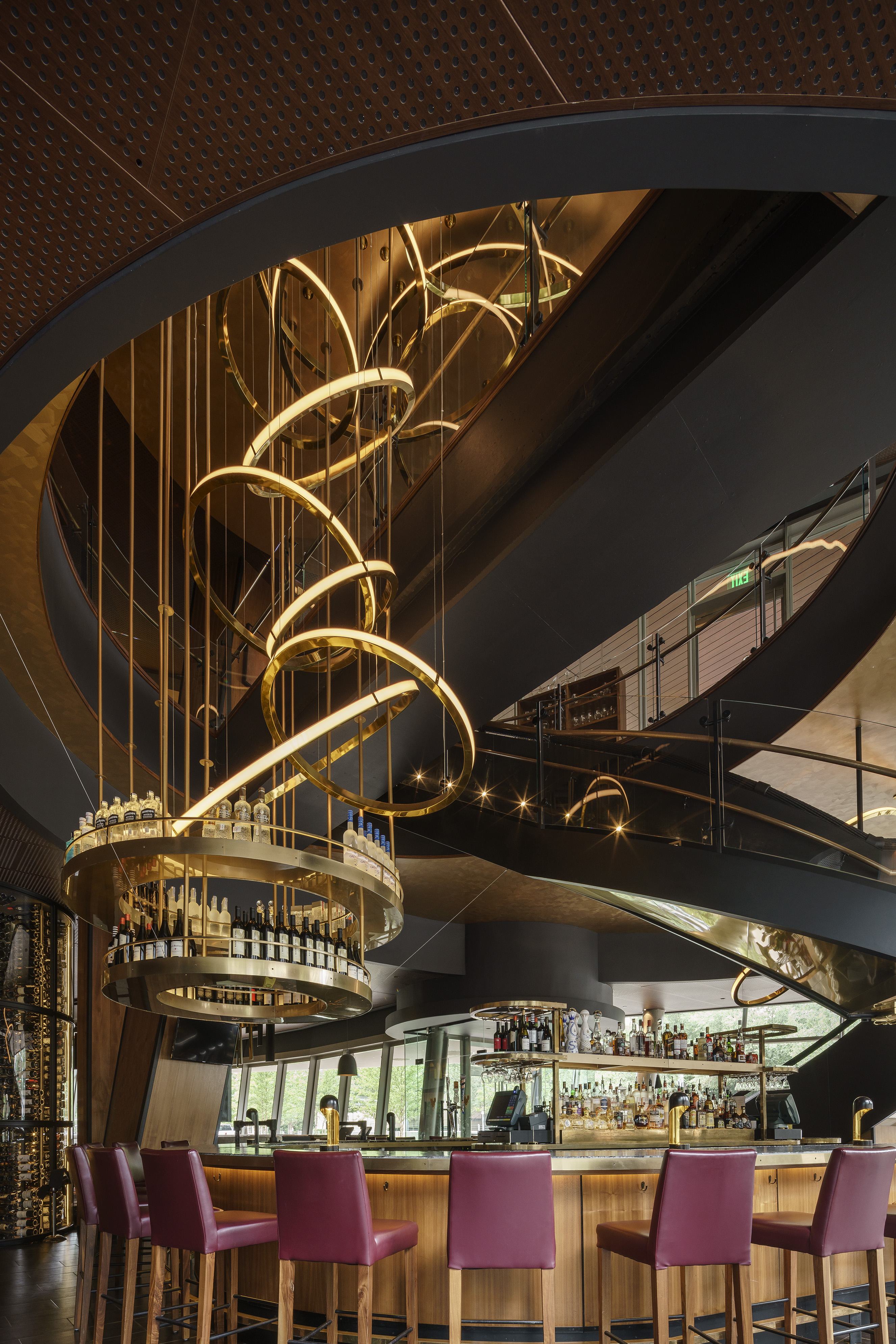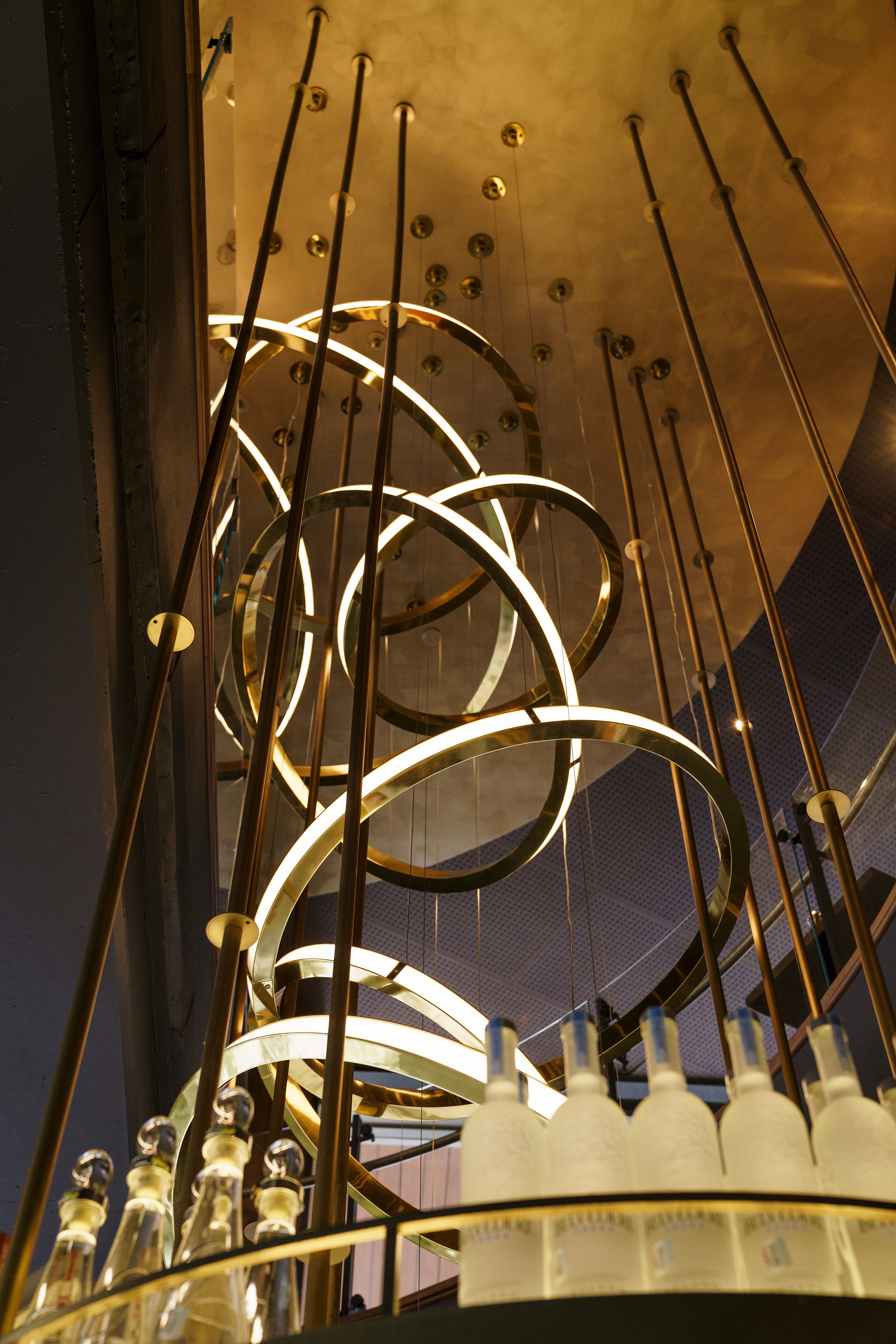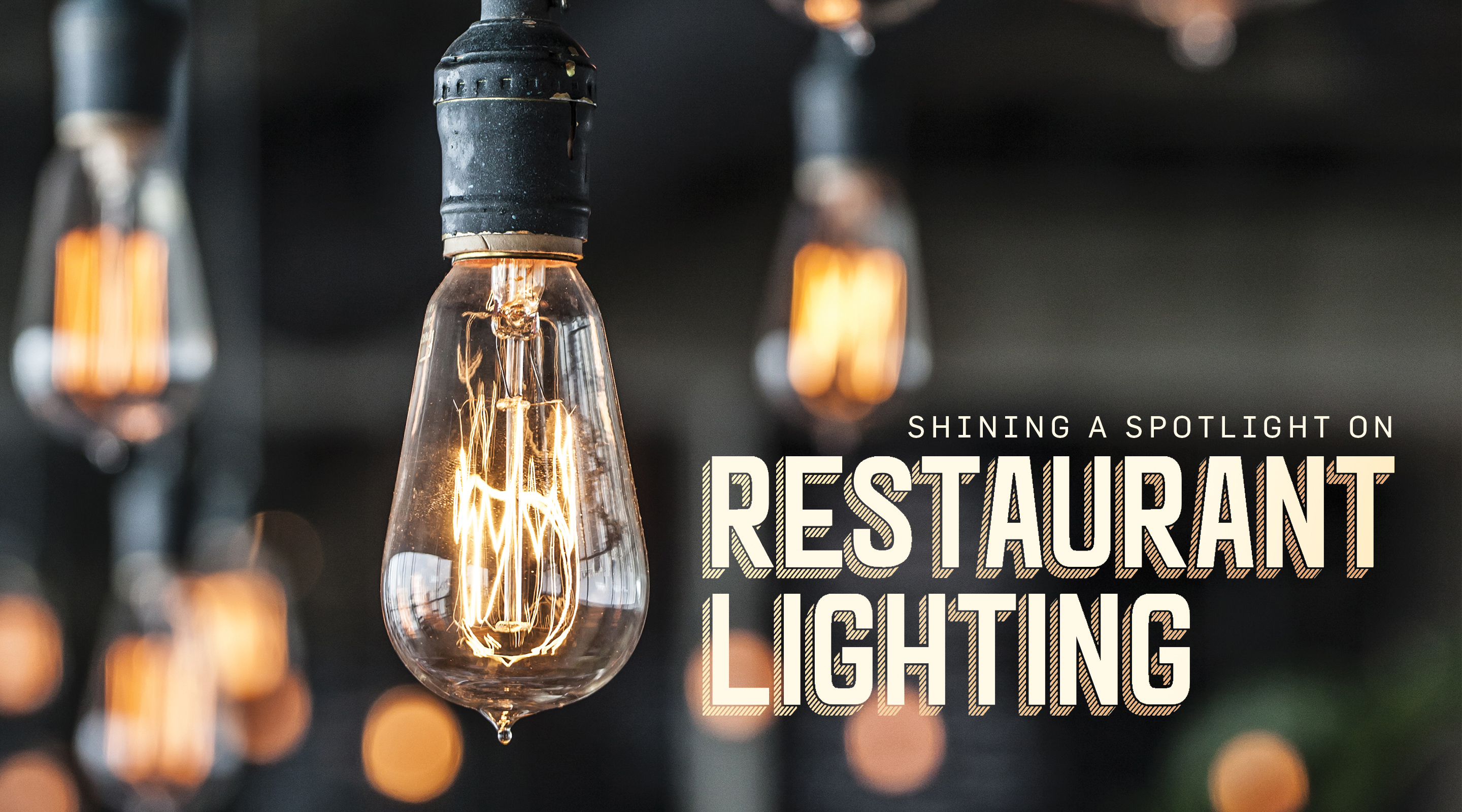We recently sat down with two members of The Johnson Studio at Cooper Carry to talk about bar and restaurant lighting. The Johnson Studio has nationally recognized, award-winning expertise in F&B and has led the architecture and interior design of more than 600 restaurants. We spoke with the studio’s lighting gurus: Studio Director Anita Summers, AIA, Associate Principal, and Belgy Londono, Designer II.
What are the unique challenges of lighting a restaurant?
Summers: The biggest challenge we face when lighting a restaurant is coordinating all of the different dimming elements. Decorative light bulbs dim differently than integral LED track lighting or recessed strip lighting. Coordinating the lighting manufacturer’s information with the engineering and the different control panel options is complicated and tricky to pull off. Also, lighting is subjective. What one guest likes another might not. Is the space too dark, or is it moody and dramatic in just the right way? We’re always trying to strike a balance between “magical” and being able to read the menu.
Londono: A tight budget is another challenge. Having a tight budget forces the lighting to be stripped down to simplicity with the expectation that it will still be creative. Memorable. Trying to find a way to make a project shine within major cost limitations takes a team working together to find very creative solutions.
What are the latest innovations in lighting technology that you’re excited about?
Summers: It’s exciting to see the better quality of light from fixtures that are getting smaller and smaller. Tiny track heads that attach to the track only by a magnet and are easily moved to wherever you need them. Lighting in sheets that is literally paper thin, used for smooth backlighting of a material. LED lighting that continues to get more affordable, controllable and offer a pleasing quality of light. All of these are advances in the field.
Technology also has led to more energy efficient fixtures that are more user-friendly. Wireless fixtures and controls, fixtures that change from the color of fluorescent light to warm incandescent light as they dim, and control panels that dim the lights, lower the shades and adjust the temperature automatically are all now commonplace in the restaurant lighting design business. Add to that the fact that we can deploy tools like photometric analysis, which help us develop the most optimal lighting for each and every space.
Londono: I’d add Indigo-Clean light fixtures which kill bacteria and disinfect the air. This technology is already being used in hospitals. I think you’ll see more of these light fixtures in restaurants in the future.
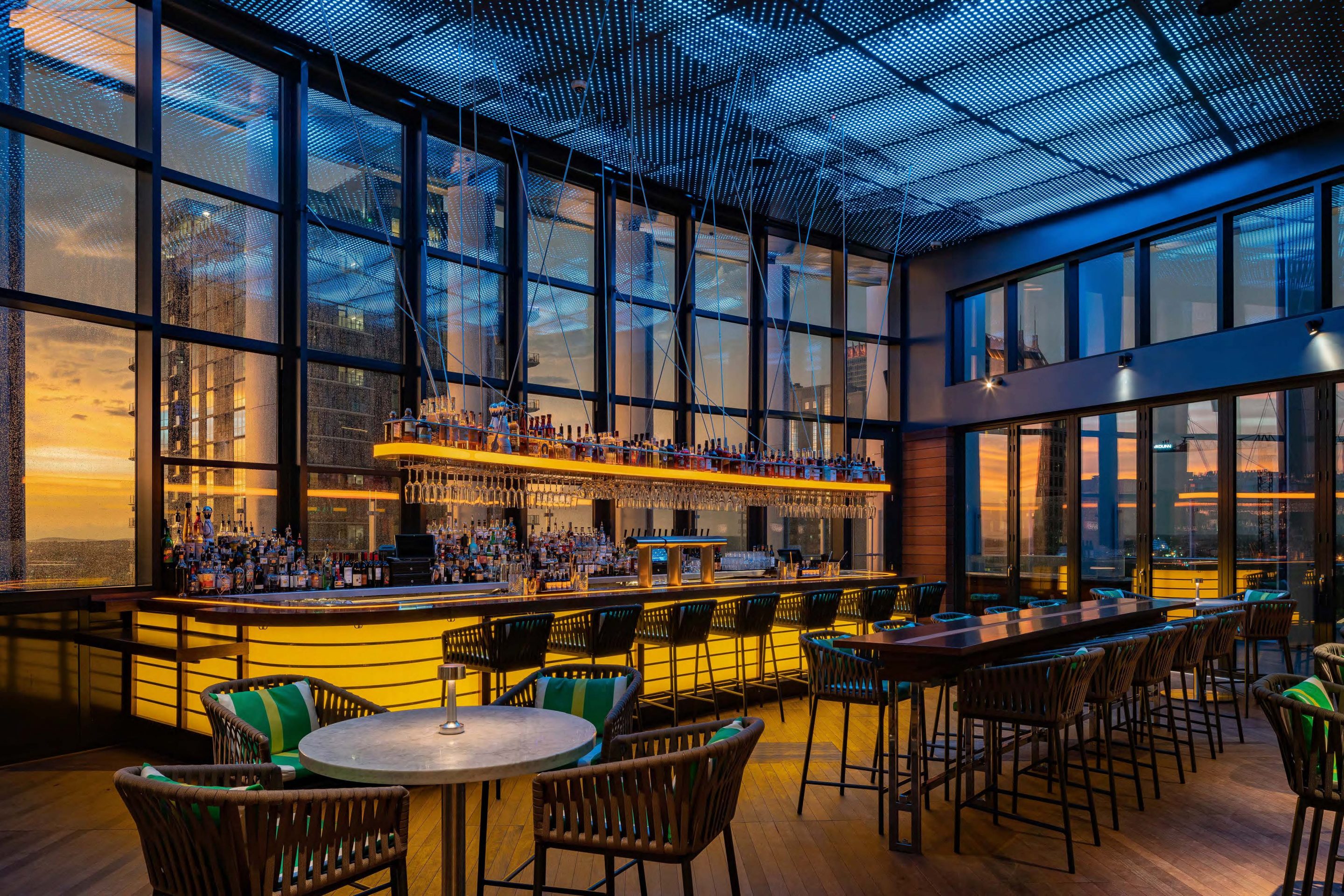
What are some of your favorite examples of lighting you’ve done for hotels and restaurants? Share what is special about them.
Summers: One of our favorites that just opened is the rooftop bar at the Kimpton Tryon Park Hotel in Charlotte, NC. The client wanted to be able to see there was a party going on 20 floors up on the roof so we designed a rooftop bar with a ceiling that you can see from the sidewalk below. The ceiling is metal with a cloud sky perforated pattern with changing colored lights above. The ‘sky’ looks like rolling clouds and changes colors depending on the time of day from daylight, to sunset, to a nighttime sky.
Another recent favorite is the Del Frisco’s in Dunwoody, an Atlanta suburb. It’s a great mix of decorative lighting, floor lights, hidden strip lights, a glowing wine wall. We designed it so the room can have a low-lit ambiance but you can still see at your table thanks to pinpointed spotlights. We also created a wine corridor with glowing floors for an experience coming from the valet entrance off the garage into the restaurant.
What restaurant lighting design trends are you seeing these days?
Londono: We’re interested in being able to incorporate more Tunable White light into restaurants. It allows for a customizable and personalized color temperature of choice, ranging from very cool to very warm. Instead of changing the décor in a restaurant, changing the color temperature throughout the day has a huge effect on the look and feel of a space.
Summers: There’s a major trend toward more decorative lighting. Toward glam, decorative fixtures of all types rather than just one chandelier in the middle of the room with a bunch of recessed spots. Dining rooms have eclectic pendants, surface mounted funky fixtures, floor lamps, table lamps, so that in every direction you look there is a unique view. Warm shiny metals, geometric shapes, and wood finishes are also trends in today’s fixtures.
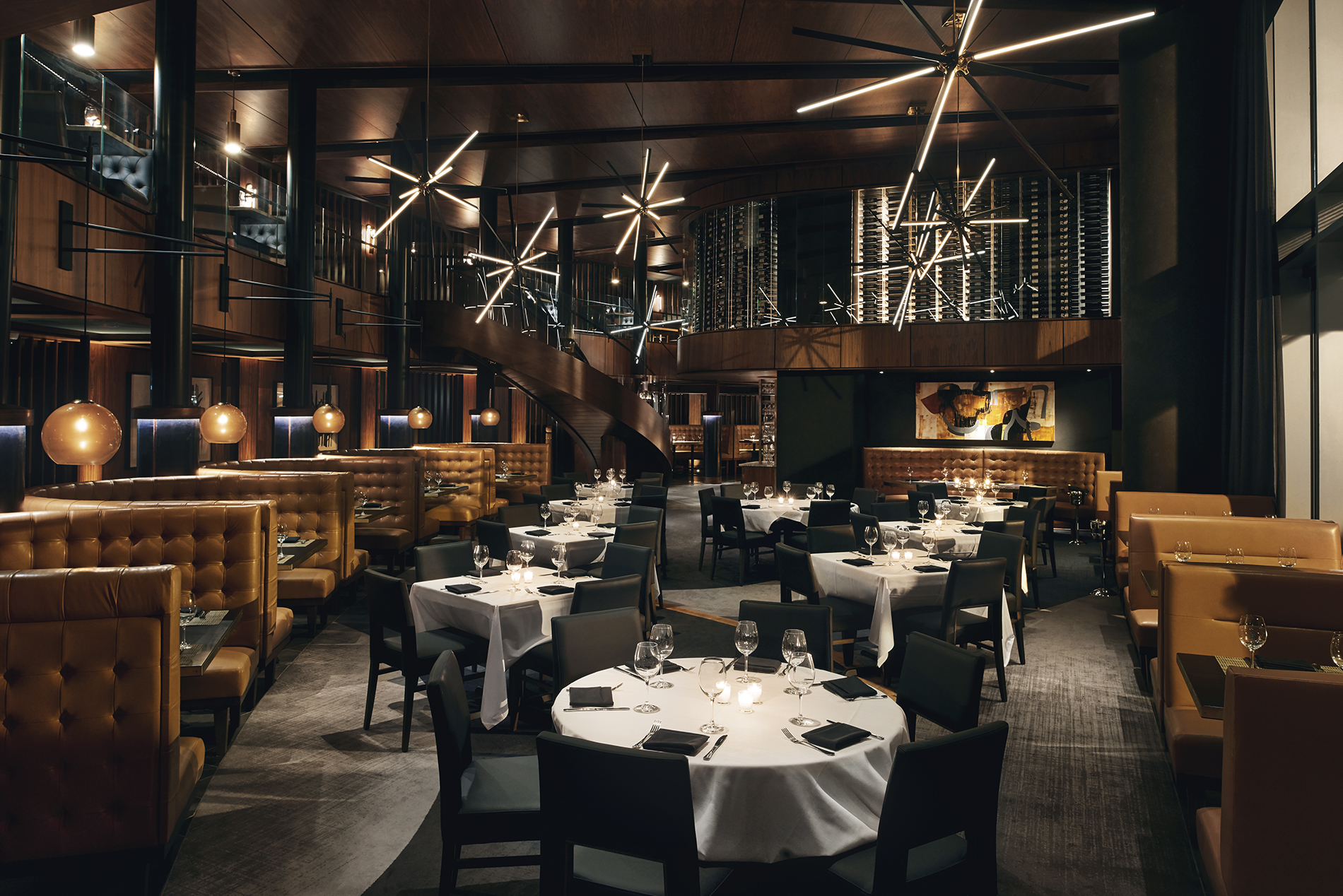
Where are you finding all of these glam fixtures?
Summers: Most of what we do is custom designed by us. We work with artists and custom lighting companies to develop lights that capture the story we want to tell. That’s how we can ensure each restaurant is truly unique. We’re lucky enough to have clients that want something special, and then we get to create it.
What modes of thought do some owners currently have around restaurant lighting, if any, that you’d like to change?
Londono: Some in the industry don’t think lighting is that important and spend minimally on it. They think as long as there is light in the space that’s good enough, but that just isn’t true. A lighting designer has to run calculations of foot candles in a space. We ask questions like how will the lighting affect how guests see the materials and finishes in a project, what optics are needed, what architectural elements do we want to accentuate, how does the lighting coordinate with other disciplines? There are so many things that go behind the scene for a restaurant lighting designer that owners are not aware of. I want owners to understand that lighting has the power to transform a space and change a person’s mood.
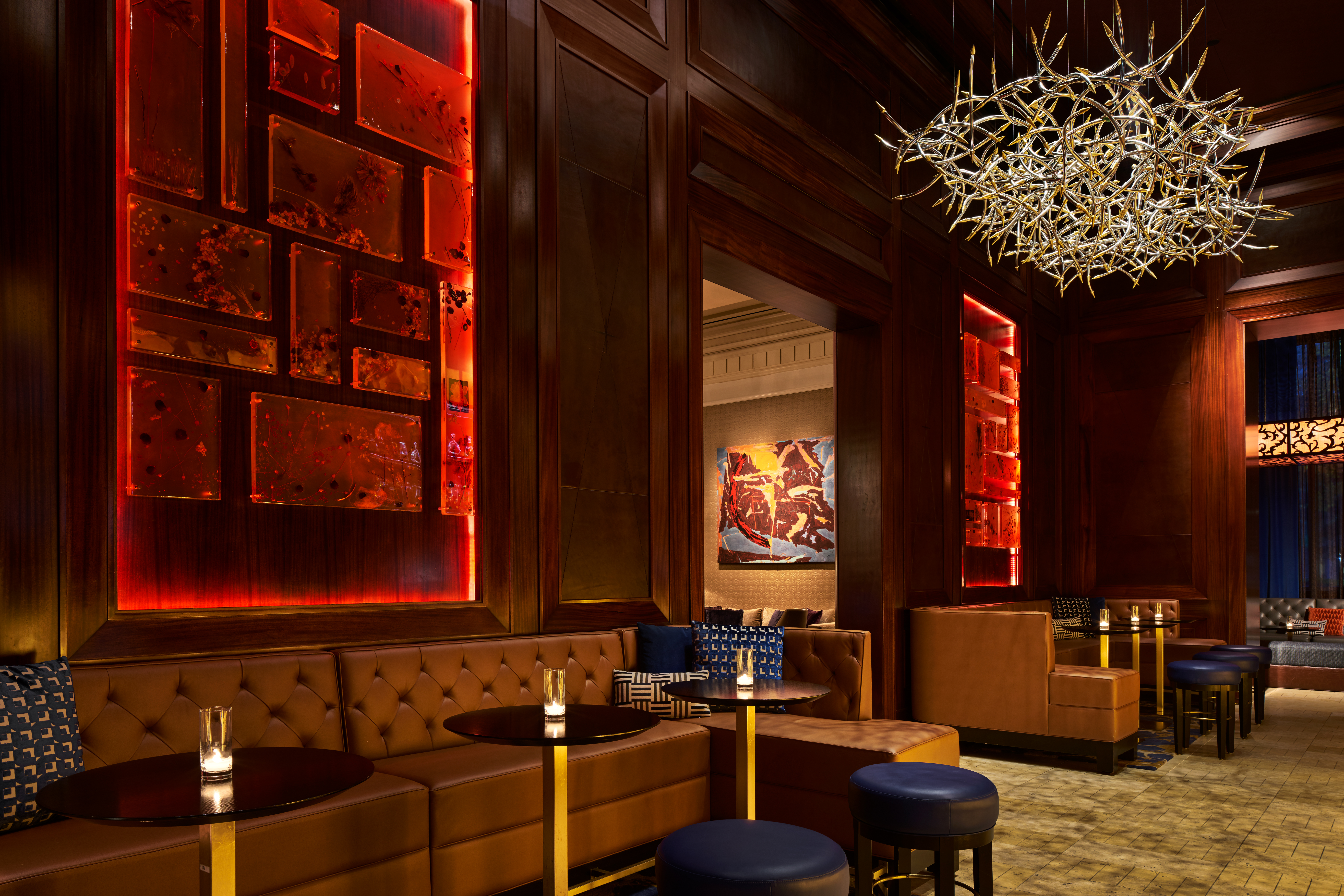
If you’re sitting in a restaurant, what drives you crazy about lighting design? How are people getting it wrong?
Summers: I always find it funny when there’s an abrupt change in the lighting level while you’re dining in the restaurant. When the lighting suddenly drops and you know the manager just pushed the ‘dinner setting.’ There should be a fade where one scene gradually and organically moves into the next, but that’s not always the case, especially in older, classic restaurants.
Londono: What drives me crazy is when I can’t read the menu and I have to pull out my phone and use its light. To me, it is important to come up with a solution on how to best tackle this issue while maintaining our lighting design concept.
What is your favorite non-architecture, non-lighting design related book/website/magazine that inspires and stretches your thinking around lighting design?
Summers: Great photography and books on photography are great for inspiring ideas about lighting because lighting is so important to an excellent, impactful photo. Also, most lighting technology and sometimes lighting designers come from theater. Going to a concert or the theater is very inspiring because they almost always are on the forefront of how to light a stage, using foreground and background lighting, changing scenes and using dramatic lighting effect. It’s is a great way to get new ideas.
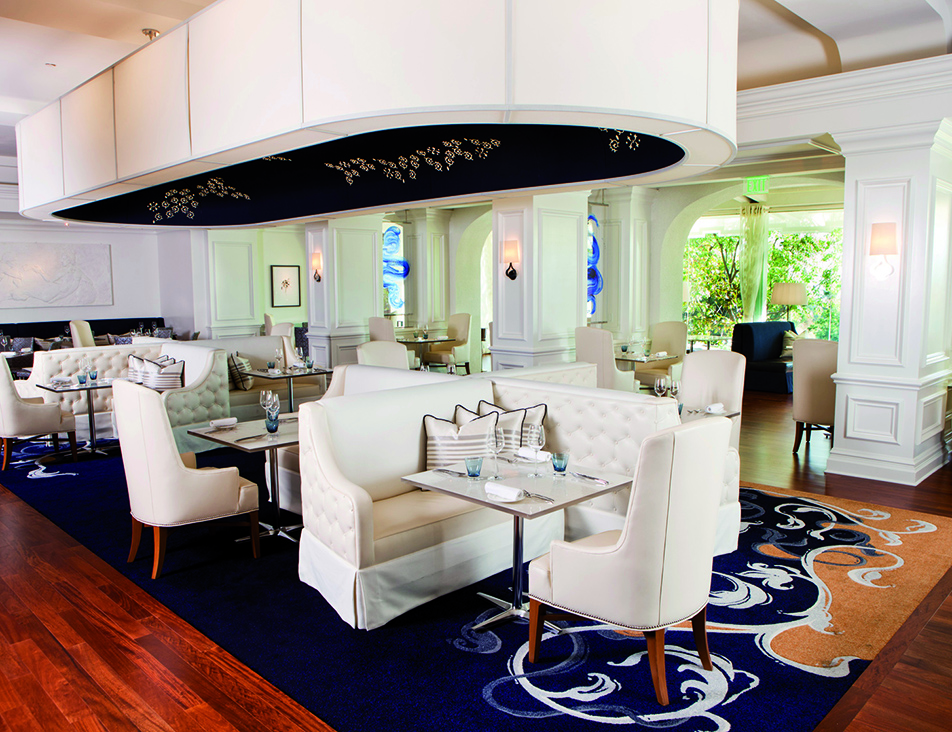
What drew you to lighting design in the first place? What is magical about it?
Londono: What I find fascinating about lighting is how with a touch of a button we can change a space into several experiences. We can make a space dramatic by having high contrast, soften the space by dimming lights, create a more uniform ambiance, increase light levels to reveal more details and finishes in a space. We can hide certain elements from the viewer. It feels like a magic trick.
Summers: I think I was drawn to lighting by a series of seemingly unconnected events. I was lucky enough to take a class in college on color and light. The professor was an artist and an expert in the field. I learned about the additive properties of light, the difference in warm and cool color waves and color theory. Later as a young architect, when I started working for Bill Johnson in restaurant design, I quickly learned the importance of lighting in a restaurant space. I think because of my earlier interest it made sense to me and I wanted to learn as much about it as I could. I truly feel like it’s an art form; you are painting space with only light.
My favorite thing about setting the lights in a restaurant at the end of a project is seeing the difference in what the job site looks like when I get there and after I’m done, when the lights have been directed to highlight art and tables, when I’ve set the scene with highlights and lowlights, and now it’s a restaurant. The process always amazes me and makes me proud of the work we have done.
Are restaurants brighter these days?
Summers: I do think restaurants are brighter these days. I have two theories. One is that it has to do with strict energy codes. To get under the wattage allowance it’s necessary to use LED fixtures, which traditionally don’t dim very well. Thus, restaurants started getting brighter. Theory two is that it also has to do with everyone wanting to look good on Instagram. A night out at a restaurant means photos of food, friends and décor details, all of which end up on social media. Restaurants benefit greatly from all that internet buzz, so it’s good for everyone if lighting puts restaurants in the best … well, light.
Visit The Johnson Studio at Cooper Carry for more on their restaurant design expertise.
